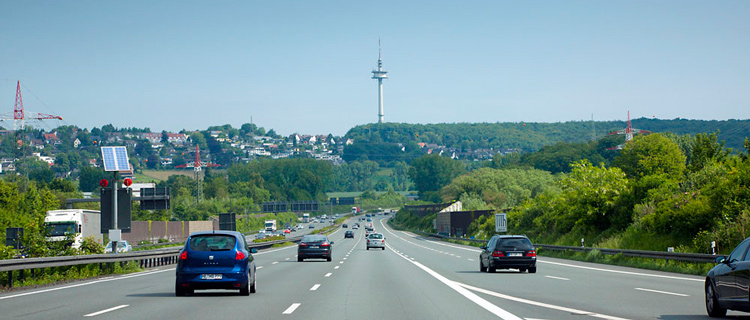
Environmental footprints
Look beyond city limits
Sustainable cities must also account for imported goods and services
Cities aspiring to transform their cities into models of sustainability must look beyond city limits and include in their calculation the global flow of goods and materials into their realm, argue researchers in a recent article published in Ambio.
Many cities are now developing sustainable strategies to reduce pollution and congestion, improve the quality of life of their citizens, and respond to growing concern about human impact on climate and the environment.
No longer in isolation
But sustainable city initiatives often ignore the environmental footprint from imported goods and services such as food, water, and energy to cities: sustainability, it seems, stops at the city limits.
Ultimately, this will not add up to a planet able to support over nine billion people.
"The sustainability of a city can no longer be thought of in isolation from the combined resource use and impacts of cities globally. Urbanization is no longer a local issue," say the researchers behind the article entitled Planetary stewardship in an urbanizing world: beyond city limits, published October 2012. The article is co-written by centre researchers Thomas Elmqvist, Lisa Deutsch and Per Olsson.
The team behind the article proposes that cities analyse how resources consumed within a city are sourced, produced and transported. One solution could be that cities with viable sustainability strategies link together to create a vast system of cities.
A feature of such a system would be an awareness of the global resource use of cities combined. The benefits of a network of this kind could be twofold, contributing to planetary stewardship whilst providing long-term resource security for cities.
Real-time knowledge on resource flows
"Urban areas drive much of the global changes we see, whether in energy use, food supply, resource depletion or land-use change," says lead author Dr. Sybil Seitzinger, Executive Director of the International Geosphere-Biosphere Programme, based in Stockholm Sweden.
The world has urbanized rapidly and the total urban area is expected to triple between 2000 and 2030, while urban populations are expected to nearly double, increasing from 2.84 to 4.9 billion.
A system of sustainable cities will require adequate information on resource flows and their impacts, preferably in near-real-time and on a global scale.
"Digital technologies are now putting this kind of information within our grasp," says Dr. Seitzinger.
Novel, but untested
Recently, cities across the globe have joined forces in alliances to curb greenhouse gas emissions, for example through the C40 Cities Climate Leadership Group and the World Mayor's Council for Climate Change. This approach allows cities to learn from one another. Good ideas can spread through the network while poor ideas can be ditched quickly.
However, none of these efforts focuses explicitly on non-urban regions that often provide resources to urban areas. The notion of a partnership between "sustainable" cities and between cities and non-urban regions discussed in the paper is novel but untested. The new approach could harness existing partnerships and provide the foundations for a more sustainable approach to urbanization and urban living this century.
References
Planetary stewardship in an urbanising world: beyond city limits. AMBIO DOI : 10.1007/s13280-012-0353-7. Seitzinger, S.P., U. Svedin, C. Crumley, W. Steffen, S. A. Abdullah, C. Alfsen, W. J. Broadgate, F. H.B. Biermann, N. R. Bondre, J. A. Dearing, L. Deutsch, S. Dhakal, T. Elmqvist, N. Farahbakhshazad, O. Gaffney, H. Haberl, S. Lavorel, C. Mbow, A. J. McMichael, J. Morais, P. Olsson, P. Pinho, K. C. Seto, P. Sinclair, M. Stafford-Smith, L. Sugar. 2012
Visiting address: Albanovägen 28. Disability entrance: Albanovägen 18
Deliveries: Roslagsvägen 28
Postal address (courier packages):
Stockholms Universitet
Stockholm Resilience Center
[Recipient]
Frescativägen 8
114 18 Stockholm
Sweden
Postal address (letters):
Stockholms Universitet
Stockholm Resilience Center
[Recipient]
Frescativägen 8
SE-106 91 Stockholm
Sweden
Phone: +46 8 674 70 70
Organisation number: 202100-3062
VAT No: SE202100306201






